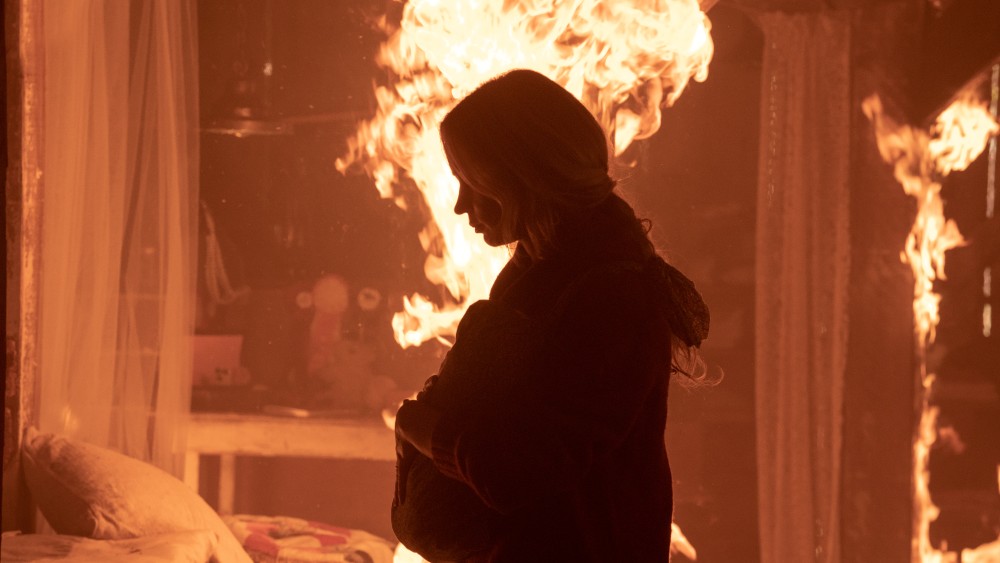
For over 25 years, Composer and Conductor Marco Beltrami has been a go-to music provider for filmmakers like Wes Craven, Guillermo del Toro, James Mangold and others, creating exciting and powerful scores for movies like the Scream series, Hellboy, Logan and more.
Beltrani has received two Oscar nominations for his music for Mangold’s Western 3:10 to Yuma and for Kathryn Bigelow’s The Hurt Locker, and in 2018, Beltrami was nominated for a Golden Globe for his score for John Krasinski’s A Quiet Place, the harrowing creature feature that used silence as a way to keep the viewer on edge. The sequel, A Quiet Place II, continues the story almost from exactly where the last movie left off.
After being delayed for over a year due to COVID, the sequel A Quiet Place Part II is finally being released in theaters this Friday, and Below the Line got on the phone with Beltrami to talk about how he changed things up for the sequel and other aspects of his career.
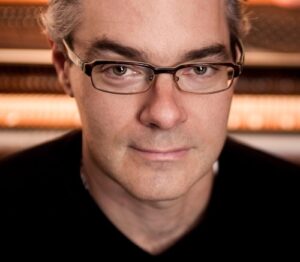
Below the Line: I was reading your Wikipedia bio about your schooling, so did you go to school with a primary instrument like piano or did you just go for composing?
Marco Beltrami: I studied piano when I was young from an early age. At first, I was playing piano in college but that changed actually pretty early on, probably in late junior high school, I started being more interested in writing music. So piano and oboe were my main instruments.
BTL: Let’s just jump right into A Quiet Place Part II. How long after the first movie came out did you know that John was going to write the sequel, and how long before you got the script?
Beltrami: I think they knew that they were going to do a second movie pretty close after the first one came out. I know they were already talking about what the concepts were for it. I’m trying to remember the timeline. I probably got a call from John maybe six months before I started on it, and I never got a script. They were originally going to send a script, but then it was getting close to the thing, and I was like, “You know what? I’d sort of rather not read a script and just see the movie and get my own visceral reaction to the film itself. To me, oftentimes, reading a script can sort of send me down the wrong path. It can be disillusioning, because there’s so many ways to interpret words on a page. And so many other things go into what makes the right ingredients for a score. A lot of that is the way it’s filmed, shot and acted and the pacing and things like that’s hard to tell from a script.
BTL: Do you generally wait for him to have a first edit of a movie before you even start?
Beltrami: Actually, the first time I saw it, there was a screening at Paramount, and it was for different people from the studio and I think probably friends and family, something like that. At that point, the music that they had in it. There was some temp music that was from the first movie, and then there were some other pieces as well. But immediately following that screening, we actually sat down and spotted the movie and went for it. That’s when I really began to work on the second. I already had some things that I was trying out, just from hearing about what was going to be on it, but I didn’t really get into it until after I saw it for the first time.
BTL: How do you feel about temp music? Many of the composers I speak to know right away when the music is not right for the picture, even though directors and others might not be as aware.
Beltrami: In most cases, I agree. The thing with this was that so much of this world was a continuation of the world set up by the first movie. So having temp from the first movie, actually, it worked well, I thought. It was the right spirit, and actually, some pieces are almost completely based on pieces that I wrote for the first movie. So I think in this case, the temp actually was nice to have in there.
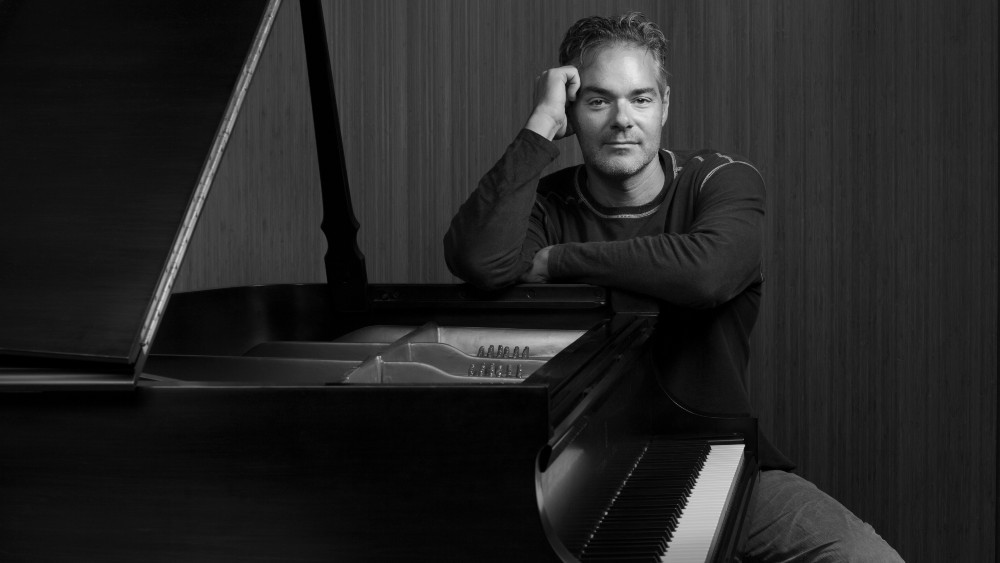
BTL: Were there any specific themes and melodies that you wanted to use again?
Beltrami: Definitely. Yeah, there’s a family theme that I first established in the first movie, which was based on this original concept, that I spoke to John about before the first movie, which was that the family was living in silence for such a long time, the idea of what music should sound like should become a little bit faded. The way I did that in the first movie was I had a piano, and I detuned all of the black keys on the piano by a quarter step, and used that to play the melody. So it sounds a little bit off, almost like it’s not quite right.
On the second movie, I thought maybe we take that a step further, and I actually got two pianos and detuned the entire second piano down a quarter step. I have to say, it’s one of the things that may have worked better in theory, like some of the melodic ideas just became a little bit too out there, but it’s some of the tension stuff, that’s where it’s really used. And in some of the action and tension cues, you can hear the two pianos, and the fact that they’re not quite a semitone apart makes it sound a little bit disconcerting,
BTL: So you have these two pianos tuned slightly differently, and you get two piano players, so are they reading two different charts and playing different things?
Beltrami: They’re playing different things, two different parts. That was one theme, this family theme that was used in the first movie then expanded on in the second. There’s another theme that I had for the girl and her dad, and that connection, and that also was expanded on in this movie. In fact, that ends the movie, in a bigger rendition of it. Those are the two that sort of drive [the film] emotionally, the whole story. And then the monsters have their own presence, and that’s also a thematic device, which is also sonically based that carries through as well.
BTL: I have to say that the way the sonics interact with music is something that really works very well to the point you’re watching the movie in dead silence, and you’re just waiting for that one sound that will cause the creatures to attack. Are you regularly collaborating with the sound editors when they’re mixing the elements to get that balance right? How much of that are you involved with?
Beltrami: We would get what the sound guys were working on and would incorporate that into what we were doing, so that frequency ranges wouldn’t clash, and they work together and also, what would drive the scene. When there’s feedback coming through the headphones, and you know that’s going to be prevalent throughout the scenes, where’s the point where it goes from, that being the focus to a melodic or thematic musical approach taking over, and so these are all things that we had to work out with the director and the sound people.
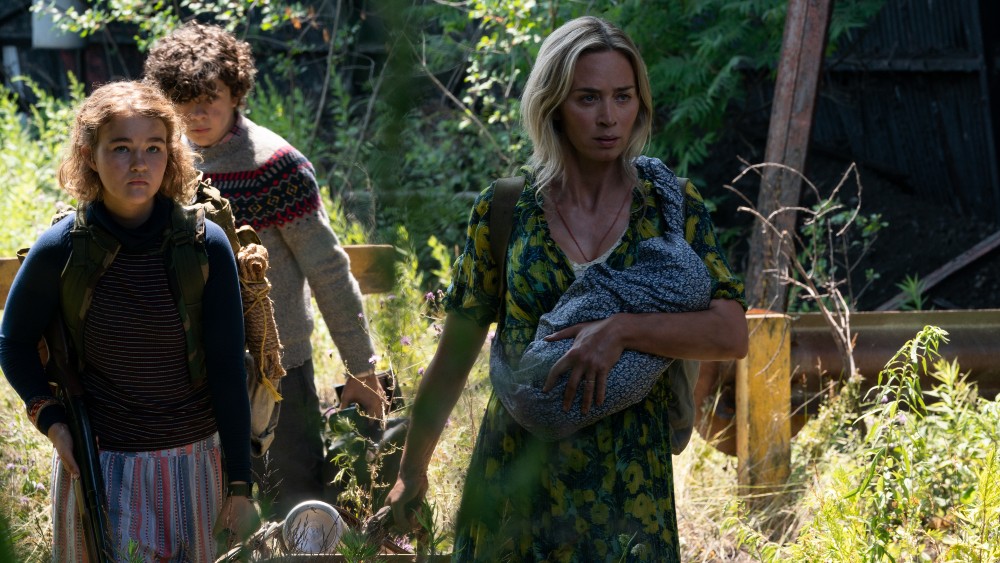
BTL: Relistening to the score for the first movie, you definitely had some piano and orchestral, but there’s some synths and some interesting sound design as part of the music, so is that stuff you’re involved with as well as part of your composing?
Beltrami: Creating sounds for this was a bit part of it, and having sounds that were unique to this movie. Buck Sanders, who works with me in the studio, we’ve done collaborations and as I was working on thematic things, we had these sessions where we recorded instruments, and then for the sole sake of processing them and using them as sonic elements that we could later adapt. There’s all types of things besides the two pianos. We had these big metal sheets, these belt plate type sheets, that we worked on getting different frequencies and sound out of. There were these wind wand devices that when you twirl them, they would emit sort of this guttural type frequency that was easy to process and work with. There were a lot of acoustical sources that we then manipulated and became part of the sonic timbre realm of the score.
BTL: Do you always start with something organic or practical or natural, versus starting with something synth-based?
Beltrami: It seems better for us to conceive things that way for two reasons. One being I think the more acoustical sources and the more you’re able to manipulate without totally destroying a human element to it, and you can keep the performance element intact. The other is that I conceive of ideas. I’m not really a computer person. I’ve definitely used computers in the work, but I come from more of a background of just pure orchestral music. So I guess it’s just the way I conceive of sounds in terms of a natural source.
BTL: I speak to a lot of different composers and everyone has a different method of working. Do you use outboard synthesizers to write at all or just using them to affect other sounds?
Beltrami: We do. We do. Buck works a lot with analog synths to create, and he did in this as well, there’s some stuff. For me, I have an electronic rig that I use, but I mainly employ the things that I work on with Buck, sounds that we work on and craft together for the individual projects. Sometimes that is the score, sometimes that is what it ends up being, but I’m not great at fiddling with knobs, and I get lost in that. I find that for me, it’s better for me to keep the big picture on what’s going on.
BTL: I have a feeling this score was done before the pandemic, because I know it had already screened a few times, but I assume you’ve been working through the pandemic, so how has that been and how has that changed your approach?
Beltrami: Actually, I think they were doing the final mix of the movie either in January or February of 2020, just as the pandemic was starting. There was talk of me going to New York to be there, but I was hearing stories at the time of this strange virus, and I was like, “Shit, I don’t feel like going anywhere.” But yeah, it was due to come out over a year ago, and they just put it on hold, because as you saw, it is really the type of movie that deserves to be in a theatrical setting. And so, I think it’s worth waiting for that opportunity.
BTL: Has the pandemic changed how you compose and record and do what you normally do?
Beltrami: I mean, this past year, I wouldn’t say that the work slowed down that much. There were projects that I was working on that had already been shot, because there’s a lag, and I was due to work on. The biggest change for me, and probably the most disappointing thing, is one of the things I love most about my job is actually working with musicians and being there in the room when we’re creating. Often, just the composing part is a very solitary job. You’re in a dark room by yourself most of the time. The fact that we had to record all these projects remotely. There would be a country where the pandemic wasn’t that bad, and we would be recording there, and we’d do it remotely via Zoom and Audio Movers and different programs. They had protocols, too, so only certain musicians could be in the room and then had to clean it. It just became a very unmusical way of working, and I think that was the hardest part for me. I mean, my daily existence wasn’t all that different, but not being able to be part of the actual music-making was a hardship.
BTL: I have to imagine you spend a lot of time writing in the studio and then you want to be on the soundstage when you’re actually recording your compositions.
Beltrami: Because there’s a lot of things that are open to interpretation. It’s hard for the chart to get everything across over some Zoom connection, talking firsthand through people. It’s a little frustrating.
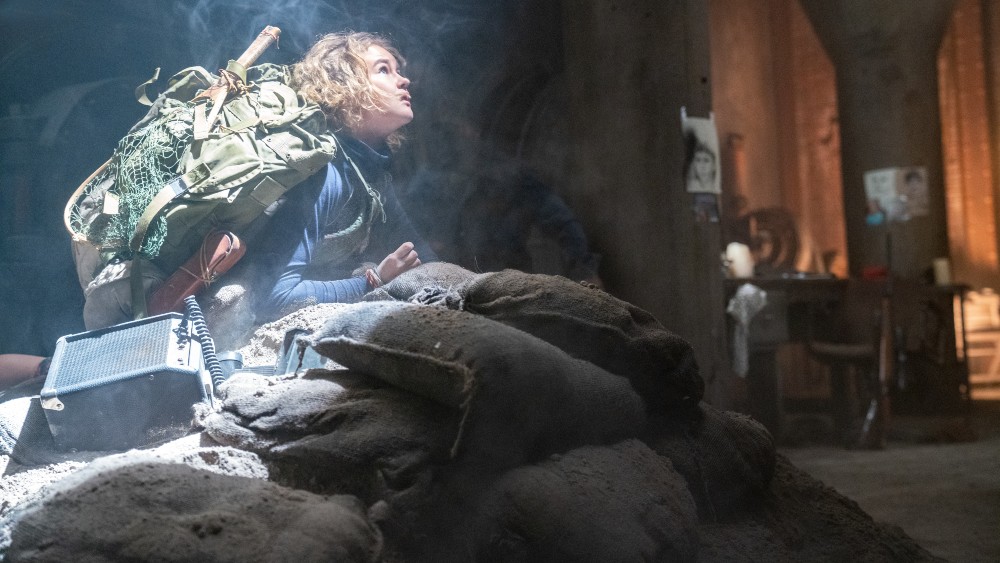
BTL: One of the reasons I’m so familiar with your work is that you’ve done a lot of genre films over the years, but they’re definitely higher-end genre, if there’s such a thing. Not like cheapo indie horror films but movies with real production value to them. Are you generally a genre fan or is that just the way things have gone that you happen to do a lot of that?
Beltrami: [chuckles] Yeah, you know, it’s funny how the cards fall. I would never have picked myself to be a horror movie composer. My first feature movie was Scream, but that also happened to be the first horror movie I’d ever seen. And I’m not a fan. I’m just like a cheap scare. I don’t like horror movies. I think the fact that a lot of the 20th-century techniques in music sort of lend themselves well to the worlds of horror movies. It made it an easy connection, the fact that these movies, especially early on in my career, did well, made more of a demand to hire me for more of them. I’ve certainly done my share, but it’s definitely not what I would have envisioned if someone had to say, “What kind of movies do you want to do?” I wouldn’t have necessarily picked horror movies.
BTL: I can’t imagine you working on a movie like A Quiet Place Part II, because there are a lot of really scary moments, but I guess when you’re scoring it, you know when something is coming.
Beltrami: Look, I’ve been doing this for however many years, a long time, so I’ve definitely become acclimated somewhat to it. I remember the first time I worked on Scream with Wes Craven, and I was petrified, but I’ve definitely come a long way from there.
BTL: I know you’ve worked with some rock bands over the years like Muse and Guns ‘n’ Roses and others, so is that something that you would want to do more of those collaborations?
Beltrami: They were all unique and fun. One of the things I like best about film scoring is the collaborative nature of it and working with other people and hearing their ideas and everything. Working with a band is like a completely different experience. Working with Guns and Roses on their Chinese Democracy album was really fun for me at the time. I did a co-score with Marilyn Manson on Resident Evil. It sort of just gives a new perspective on approaching music. Music is universal in that everybody listens and plays music. But approaches aren’t universal, so hearing different ways of working is, it all builds your character and what you do. So, I’m really grateful to have had those experiences and hopefully, I’ll do more.
A Quiet Place Part II hits theaters nationwide on Friday, May 28. Beltrami’s score is now available through La La Lands Records.
All photos courtesy Paramount Pictures, except where noted.





